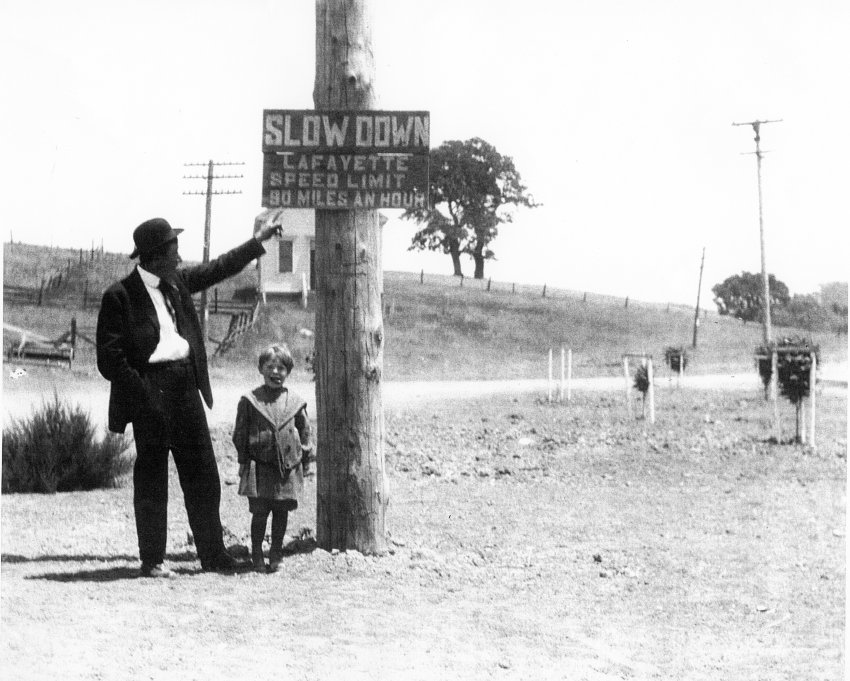This being the month we annually dance with the IRS, we thought you’d be interested in the tax situation in the county half a century ago. The State Board of Equalization issued a press release on taxation results for fiscal 1963-64, which noted that assessed property valuation in Contra Costa County was $1,042,992,000, making the county one of eight in the state with an assessed valuation exceeding one billion.
The report said the total general property tax levy amounted to $92,289,000, representing 8.85% of the assessed valuation. While not the highest in the state (that doubtful honor went to neighboring Alameda County, with a 9.73% levy), Contra Costa’s percentage was above average for the state, which reported a flat 8%.
In July of 1964, The Sun questioned whether after-school recreation programs were out for the schools, in the light of salary increases. The Board of Trustees passed a Lafayette schools budget of $2,274,911, an increase of about $175,000 from the previous year. [The 2013-14 adopted Lafayette schools budget was $29,771,054 revenue; $30,390,698 total expenditures] The 1964 Board President Boardman Moore acknowledged, “There is no provision for the after-school recreation program. We’re pretty much trapped with dollars committed already.” About 60% of the increase was earmarked for salaries. Principals, assistant principals and classified personnel were given a 5% salary boost. The superintendent’s salary jumped from $16,000 to $17,000; the assistant superintendent’s pay was also boosted $1,000, to $14,500, and the business manager’s salary went from $12,000 to $13,000.
Seven teachers were added, instead of the three positions forecast in April’s tentative budget. Among the economies was eliminating $7000 to pay salaries for teachers directing the after-school recreation program.
Schools had been leading the news since early in 1964, when The Sun headlined: “TV Hookup Will Pioneer School Education System; Students Will Learn Spanish in 10 Schools.” According to the story, “More than 61,000 feet of coaxial cable will link 10 Lafayette schools together in February, in what’s been described as the first educational television network of its type in Northern California. The school district will pioneer teaching by television as a method of meeting a state law calling for grade school foreign language instruction by September 1965.
“Lafayette, Happy Valley, Ellis, Springhill, Montecito, Stanley, Burton Valley, Vallecito, Fairview and Merriewood elementary schools will be hooked up. Pupils in 6th, 7th and 8th grades will receive Spanish instruction as a forerunner to a larger number of courses to be developed in the school system. Expansion plans include sub-6th grade levels, and offer social studies, science and music. TV offers a cheaper and better way of getting each pupil almost once a day,” the superintendent said.
In 1964, the Lafayette Chamber of Commerce took a bold step and, by a vote of 17-7, endorsed lowering the speed limit on Mt. Diablo [then called the Highway] from 35 to 25 miles per hour. The county and Highway Patrol were against the plan when it was first proposed by the Chamber, but decided to give it a try for six months.
During the trial, merchants were asked to keep a record of store traffic and see whether the speed limit change increased sales. “We have never used the economic factor before,” said Captain Edward Jelich of the California Highway Patrol. He added that 19,000 cars use Mt. Diablo Highway in a typical 24-hour period. [This was before Hwy. 24 opened. In 2014, approximately 23,800 cars per 24 hours use Mt. Diablo Blvd. east of Moraga Road, according to Leah Greenblat, City of Lafayette transportation planner.]
A week after the reduced speed announcement, a letter published in The Sun carried a strong reaction to the change. The Lafayette resident charged that the reduced speed limit “was unconstitutional and mainly for the benefit of retail businesses in this area.” He indicated that he’d written to the Board of Supervisors that the only purpose is to benefit a private group. “It will prove to be unconstitutional as soon as it is tested in the lowest traffic court,” he predicted, adding, “The new speed limit places the CHP in a position of arresting speeders—not because they are driving dangerously, but because slower speeds are needed to benefit retail sales.”
-Ruth Bailey
Editors Note: Watch for Ruth Bailey’s historical articles in the monthly issues of “Lafayette Today”


I’m not sure where you are getting your info, but highway 24 predates the freeway bypass, which opened in 1960. Hwy 24 was designated in 1932 as part of the Broadway Lower Level(Caldecott) Tunnel project, which was completed in 1937.Any reference to Mt Diablo Blvd. as the highway would have been before 1960
Do we know the date of the photo? It’s priceless!!
The freeway bypass opened in 1958.